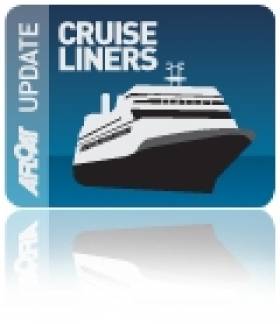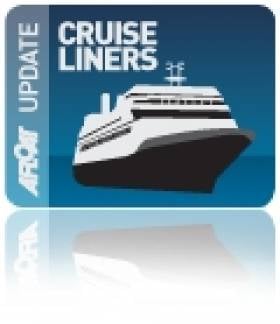Displaying items by tag: Clipper Odyssey
Small Cruiseship Set Sails for Sneem
#COASTING CRUISING – The small expedition cruiseship Clipper Odyssey (1989/5,218grt) departed Cobh Cruise Terminal this evening on a short cruise-hop along the West Cork coastline to Sneem in neighbouring Co. Kerry, writes Jehan Ashmore.
The twin funnelled vessel is normally associated with cruising in the Pacific on cruises from New Zealand to the Russian Far-East. For 2012, however she will be voyaging also to the Scottish Isles, Faroe Islands and Norway having previously served earlier this year on Indian Ocean safari cruises from Zanzibar to Mozambique visiting Madagascar and Mauritius.
A crew of 70 look after 128 guests accommodated in 64 cabins. Of the staterooms they all have ocean views, and each feature lower level beds, a private bathroom, sitting area with sofa, individual temperature control, in-room music systems and television.
At the stern is the fitness suite and outdoor pool. Other facilities include a lounge, library, gym, a medical clinic staffed by a registered physician and a gift shop. The small vessel is ideally suited for calling to shallower waters, where passenger can reach shore destinations using the vessels own tender fleet made up of Zodiac craft.
The Bahamas flagged vessel was last refurbished this time last year and she is operated by Noble Caledonia which specialise in providing a diverse range of cruising opportunities including those sailing under sail.
The company's Caledonia Sky (1991/4,200grt) has also been cruising in Irish waters this week. The 114 passenger vessel is better known as the Hebridean Spirit which had for many years operated for Hebridean Island Cruises. While on a cruise around a decade ago she made a rare promotional port of call to Dun Laoghaire Harbour.
Clipper Cruiseship Calls In for Fish & Chips
According to her schedule the Clipper Odyssey has since made several calls to include Waterford, Cobh and along the stunning scenery of the western seaboard with anchorage calls off the Great Blasket Islands, Dingle.
Yesterday the 5,218 tonnes vessel operated by Clipper Cruiuses had also called to Inishmore of the Aran Islands. Otherwise the 120 passenger cruiseship is normally found serving in the Pacific Ocean from New Zealand to the Russian Far-East. She is due to depart Co. Donegal this evening bound for Portrush.
As for the 226-passenger Le Diamant she is a frequent caller not just to Dublin, she had arrived from Penzance. The 8,282 tonnes vessel is run by Marseilles based Ponant Cruises and the twin-funnelled vessel is due to depart this evening for Fishguard.






























































